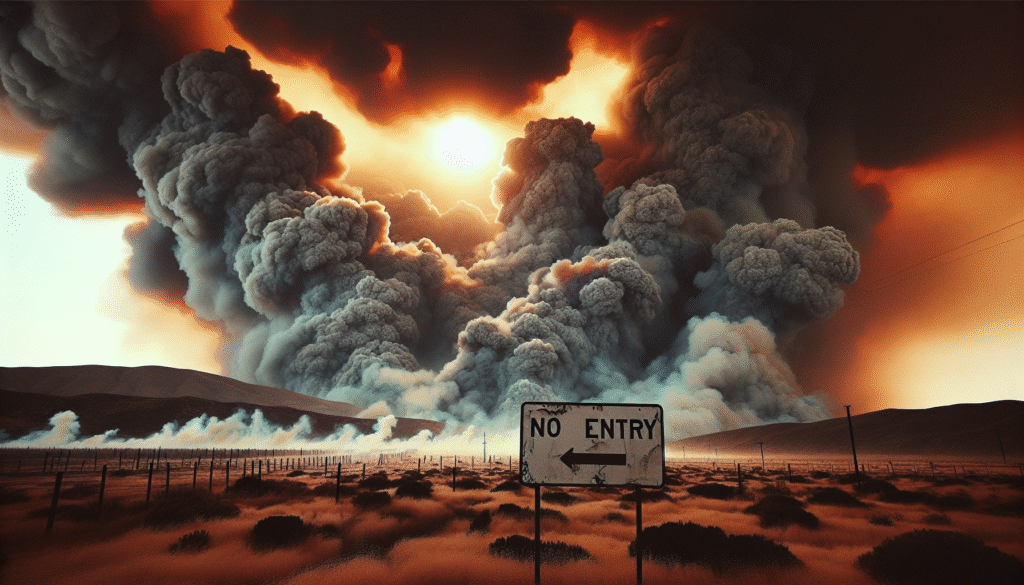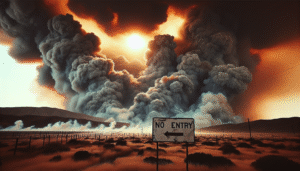
Wildfires Engulf Drought-Parched Landscapes: A Growing Crisis
Drought-stricken regions across the globe are facing an escalating threat: wildfires. Fueled by tinder-dry vegetation and exacerbated by extreme heat, these infernos are ripping through landscapes at an alarming rate, devastating ecosystems, displacing communities, and posing significant challenges to firefighting efforts. Understanding the complex interplay of factors driving this crisis is crucial for effective mitigation and response.
The Tinderbox Effect: How Drought Fuels Wildfires
Prolonged periods of drought create ideal conditions for wildfire ignition and spread. Vegetation deprived of moisture becomes highly flammable, transforming vast landscapes into veritable tinderboxes. Even a small spark, whether from lightning, human activity, or downed power lines, can ignite a conflagration. The lack of moisture in the soil also hampers the ability of vegetation to regenerate, creating a cycle of vulnerability. As temperatures rise and humidity levels plummet, the risk escalates further, creating a perfect storm for catastrophic wildfires.
Climate Change: Fanning the Flames of Disaster
The fingerprint of climate change is increasingly evident in the escalating wildfire crisis. Rising global temperatures exacerbate drought conditions, drying out vegetation and creating hotter, drier environments conducive to fire. Changes in weather patterns, including more frequent and intense heatwaves and prolonged periods of low rainfall, further amplify the risk. These shifts are contributing to longer fire seasons, larger burn areas, and more intense fire behavior, posing unprecedented challenges to fire management agencies worldwide.
The Devastating Impact on Ecosystems and Biodiversity
Wildfires have a profound and often devastating impact on ecosystems. They destroy habitats, decimate wildlife populations, and disrupt delicate ecological balances. The intense heat can sterilize soil, impacting seed germination and hindering plant regeneration. Smoke and ash released into the atmosphere contribute to air pollution, posing health risks to humans and animals alike. The loss of vegetation cover also increases the risk of soil erosion and landslides, further degrading the affected environment.
Communities in the Line of Fire: Displacement and Economic Loss
Wildfires pose a significant threat to human lives and livelihoods. Communities located in or near fire-prone areas face the risk of evacuation, displacement, and property loss. The economic consequences can be devastating, impacting tourism, agriculture, and other industries. Beyond the immediate physical damage, wildfires can also have long-term impacts on mental health and community well-being. The trauma of experiencing a wildfire can linger for years, impacting individuals and communities long after the flames have been extinguished.
Combating the Inferno: Firefighting Strategies and Challenges
Firefighting agencies are on the front lines of this escalating crisis, employing a range of strategies to combat wildfires. These include ground crews, air tankers, and sophisticated fire suppression techniques. However, the increasing intensity and scale of wildfires are stretching resources thin and creating unprecedented challenges. Limited access to water sources in drought-stricken areas further complicates firefighting efforts. The steep and often inaccessible terrain in which wildfires occur can also make it difficult for firefighters to reach and contain the flames.
Prevention and Mitigation: Building Resilience in Fire-Prone Landscapes
Preventing and mitigating wildfires requires a multi-pronged approach. Fuel management strategies, such as controlled burns and forest thinning, can help reduce the amount of flammable material available to fuel wildfires. Community education and outreach programs play a vital role in raising awareness about fire safety and promoting responsible behavior in fire-prone areas. Strengthening building codes and implementing fire-resistant landscaping around homes can help protect communities from the devastating impacts of wildfires.
Investing in Early Warning Systems and Fire Detection Technologies
Early detection and rapid response are crucial for effectively managing wildfires. Investing in advanced fire detection technologies, such as satellite imagery and remote sensing systems, can help identify and locate wildfires in their early stages. Improving weather forecasting capabilities and developing sophisticated fire behavior models can provide valuable information for predicting fire spread and allocating resources effectively.
International Collaboration: Sharing Expertise and Resources
The wildfire crisis transcends national borders, requiring international collaboration and knowledge sharing. Sharing best practices, exchanging expertise in fire management techniques, and collaborating on research and development of new technologies can strengthen global capacity to combat wildfires. International aid and assistance are essential for supporting countries facing particularly severe wildfire challenges.
The Role of Technology in Wildfire Management: Innovations and Advancements
Technological advancements are playing an increasingly important role in wildfire management. Drones equipped with thermal imaging cameras can provide real-time information about fire behavior and hot spots. Artificial intelligence and machine learning algorithms are being used to analyze data and predict fire spread, assisting firefighters in making informed decisions. These technological innovations are enhancing the effectiveness of wildfire response and contributing to more proactive fire management strategies.
Building a Fire-Adapted Future: Lessons Learned and Long-Term Strategies
The increasing frequency and intensity of wildfires underscore the need for long-term strategies to build fire-adapted communities and ecosystems. This includes integrating fire management considerations into land use planning, promoting sustainable forest management practices, and investing in infrastructure that can withstand the impacts of wildfires. Learning from past experiences and incorporating scientific knowledge into decision-making are essential for building a more resilient future in the face of the growing wildfire threat.














